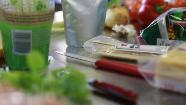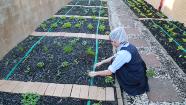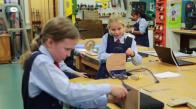Cedenco Foods has to manage planting and harvesting times to ensure maximum utilisation of the factory facilities and meet customer specifications.
Managing raw materials and costs in a global food environment – Cedenco Foods
Transcript
Noel Amor: From our side if you look back at the customer end, work back to what they want you to make for them, come to the assets we’ve got here or if you like the processing lines, we know the capability and the capacity and the kind of recoveries we can expect, so we’ve got to transform that into what do we grow – and then we also have to look at the weather risk and the seasonality if you like. So we know that some seasons are wet some are dry and some are a mixture. You’ve got to look at I guess the experience is what comes into play there and how big along do you plant the season.
Sure if we could run our factory for 365 days on the same product everyday that’s the ultimate, we’d be more profitable but these summer crops have only got a short period and short window so we’ve got to be careful we don’t start to early and we don’t leave it to late. Most crops will ripen in what you might call a bell shape curve, so they’ll start ripening and you’ll get a huge amount and then they’ll taper off.
Well our factory’s just flat. You can only take so much everyday, so we resource mixing those two together. So the way that Cedenco does it we are hugely involved in all that scheduling, the varieties that are used, when theyr'e planting, that sort of matrix of time. Whether we’re planting in our own farms or using contract growers or other relationships with landowners, that’s mixed together so everybody’s in the same schedule, and I think that works reasonably well.
We wrestle with things like weather during planting where you can’t necessary plant what you want. So these are the things that we are juggling all the time. Once that’s done and that’s set then we’ve got to analyse the time clock of the plant, when it flowers, therefore when it’s likely to be mature, look at the heat units, look at all the factors that will influence that. So as we get closer to harvest we’re well of aware of what’s coming in, time frame, type of quality, so samples are taken in that pre harvest period, so that’s the initial part of I guess the QA system, to validate that is where we think it is and if it is not optimal or it’s different then we’ve got to learn from that and adapt from that.
So, that process starts and once product actually hits here, then we retest it all again and inline and as we process through different pieces of gear we’ve got a lot of inline monitoring as well. So, we’ve certainly got the information to be able to control and make what we’re targeting to do. I think everybody has a bit of an idea about grapes and squashing them and making wine and something nice at the other end. Any food product’s virtually the same thing, so what we’ve got to realise is that, that flavour, or colour, or aroma, and all those things they really want at the other end, which we might transpose into the green colour of this or the yellow colour of this and the thickness of this or some other viscosity measurement or, some flavours organoleptic kind of analysis, we’ve got to transpose it back into the fruit and as we see that change we’ve got to decide well, does that mean we move onto another set of customers that fits that better, or do we start changing the way we harvest and moving to different areas.
It’s not so flexible given the crop’s in a kind of an order if you like. So we tend to know what we’re trying to make as far as customer specifications, we weave our way through those to optimise the fit for everybody at the other end. So it is a juggle.
If we’re talking about process automation or ways of, I guess, smart ways of controlling the process, as we develop these foods, the customer base is getting more demanding about what we test and how we test, they’re finding more attributes that for and from a good reason will affect their product, so the more they know about their end retail product that you and I buy from the supermarket, shunt it back to us and say look if you can vary this, this, and this, might be colour, viscosity or flavour or whatever, pectin content something like that, then we have got to find ways of controlling that. One option obviously is the raw material to make sure it’s in there. Certainly once the raw material is in the plant there are various things that we can do for a start to even measure what’s in there, so we’re always looking at any automation options where we can measure these attributes as we go through, measure them live continuous and therefore we can put them up and alarm them, we have certain trigger points there so we’re not missing it.
I guess the other option is you’re testing on a manual basis on a regular time frame and the difficulty of that is that in between those times things can change. So a good example would be optical sorting, so if you think about this as technology used with different, not necessarily just visible light either, to look at food products for example let’s talk about whole kernel sweet corn. We’re able now to image the corn in various wavelengths of light some visible, some infra red, some near infrared, and they can see different things. For example if we were going to remove some rot from some food product we wouldn’t necessarily look for something brown, we might use a different wavelength of light that would pick specifically on what’s happening there, so I guess what you’re going to see when you see that line is a machine in there has the ability to look at defects known, defects that we want to remove and it has the ability to remove those, so one, it will identify it, later on in the belt it’ll look at it and it’ll have a system to knock it out, so there’s a lot of that technology available now and it’s getting more and more adopted.
Related videos
Real food, real fast (02:35)
Students were set a brief to develop a faster, fresher, healthier takeaway based on an analysis of a traditional recipe....
A food bag for a family dinner (03:31)
With a focus on using seasonal produce and their families as stakeholders, students produced great recipes and food bags for a family dinner....
My context and issue (04:57)
Year 13 students share about the contexts and issues they have chosen in their food technology programme.
Engaging contexts in product design (03:09)
Abby Dingle discusses materials and tools that engage students in product design.




